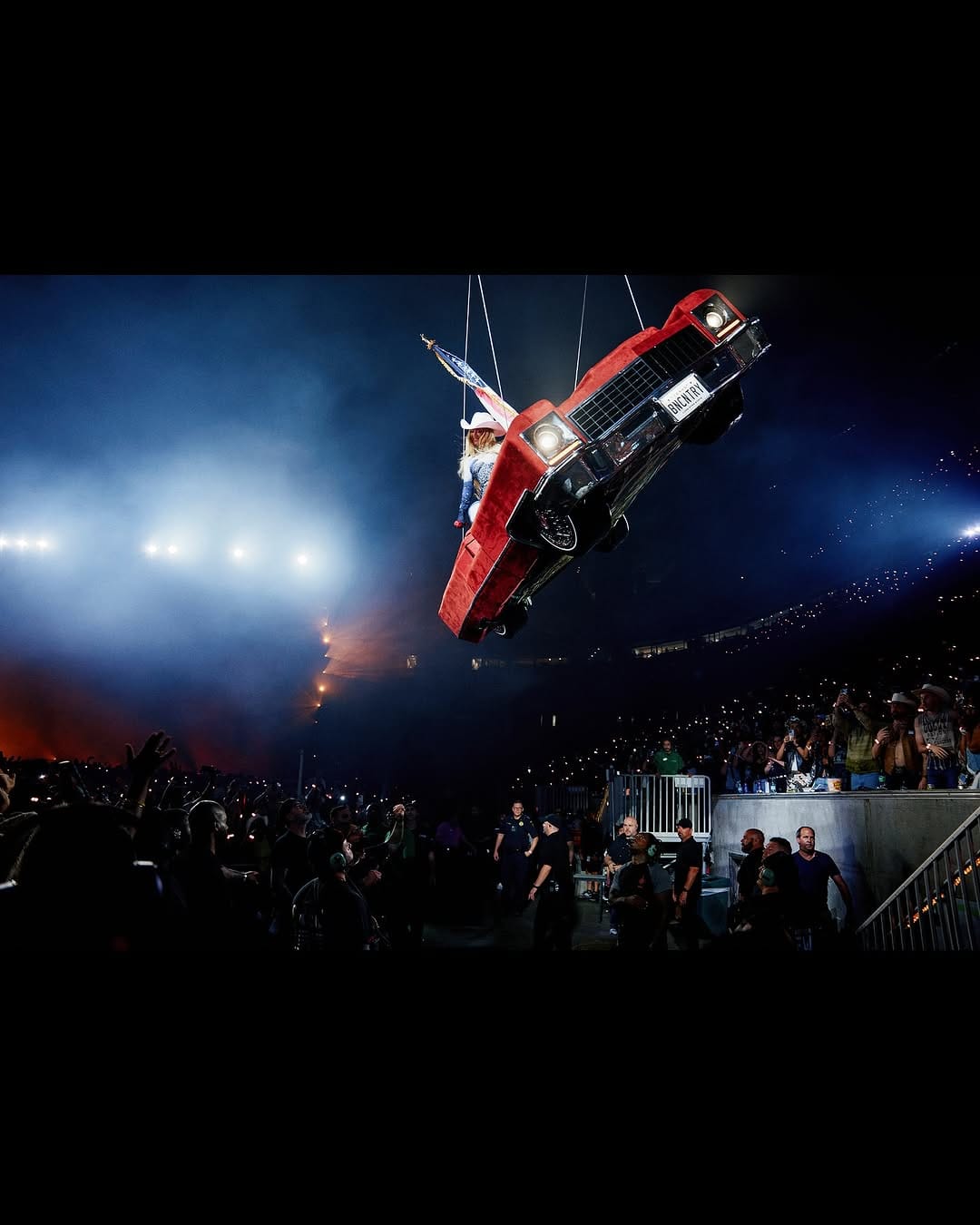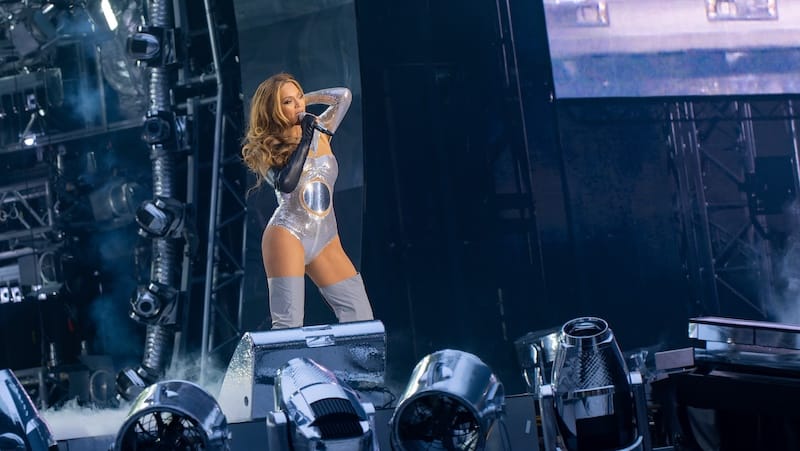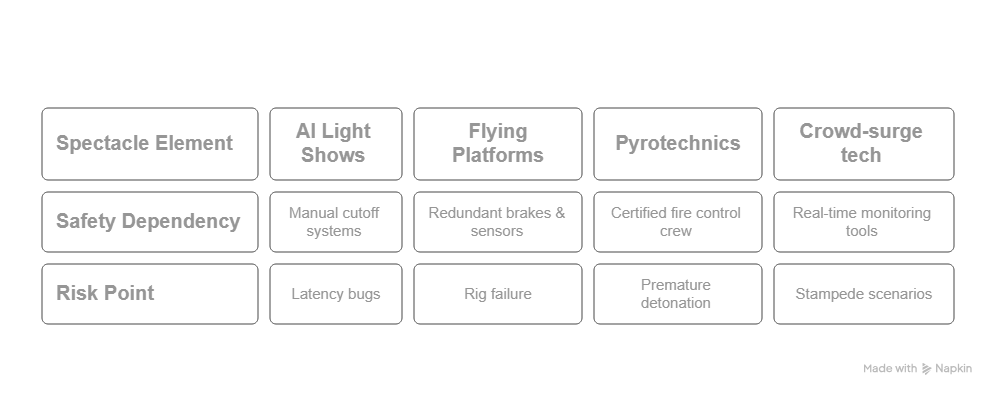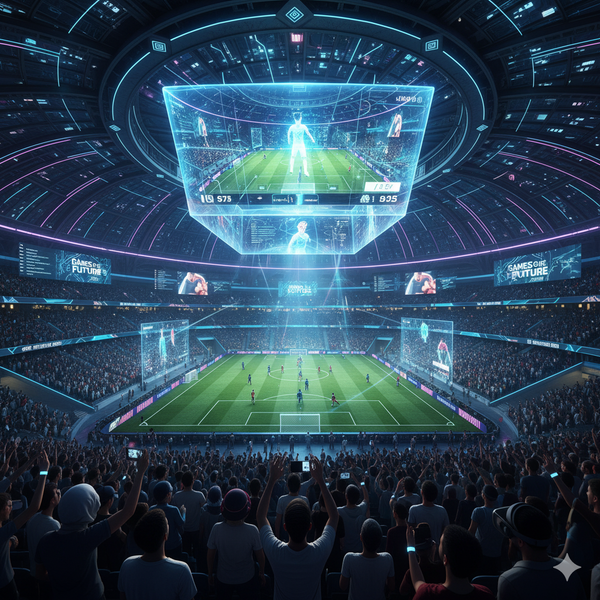Lights, Camera, Glitch! How High-Tech Concerts Are Dancing on a Razor’s Edge
From Beyoncé’s stalled stage to Travis Scott’s Astroworld tragedy, high-tech concerts are testing the limits of safety. As automation and robotics dominate live shows, are we trading artistry for accident risk?

LOS ANGELES, June 30, 2025
What happens when drones, pyrotechnics, and large moving equipment become part of a concert, only to malfunction? Today’s concertgoers expect incredible experiences, including holograms, floating stages, motion-synced lighting, and AI-driven effects. But with these impressive displays comes greater risk. A tech failure at a concert isn’t just annoying—it can pose serious safety issues. This blog looks at how modern concerts balance spectacle with safety, focusing on Beyoncé’s composed performance during a tech glitch mid-show.
The Spectacle Surge: Tech as the Main Attraction
Over the last decade, pop and hip-hop concerts have transformed from big-band tours into immersive multimedia events. Beyoncé’s Renaissance tour featured moving platforms, floating pods, and synchronized drones. Lady Gaga’s Chromatica Ball used advanced hydraulic lifts. Meanwhile, Travis Scott’s Astroworld operated like a theme park ride with pyro, video screens, and synced audio effects.
These innovations enhance the fan experience but complicate stage logistics. Gone are the days when problems like a guitar string breaking or a microphone failing caused the most issues. Now, industrial-scale machinery operates overhead, affecting both performers and fans. Each automated lift, robotic arm, or AI-triggered laser adds further technical and safety complexity.
Entertainment expert Jake Martinez remarked, “Stage tech now includes hydraulic lifts, AI lighting systems, and semi-autonomous rigs. Without safety backups, that’s like playing with fire in front of 50,000 people.”
If a multi-axis stage platform loses power or a drone miscalculates its height, the situation can become dangerous very quickly.
Concert Glitches in the Spotlight
Let’s revisit some notable malfunctions—how the artists responded, how crowds were handled, and how the world reacted online.
Beyoncé – Renaissance Tour Stage Freeze (2018 & 2023)
What occurred:
During her 2018 Mrs. Carter World Tour—and later during the Renaissance world tour leg in 2023—Beyoncé’s floating stage platform suddenly stopped just above the ground. The lights dimmed, the music cut out, and silence spread through the audience.
Her response:
Unfazed, Beyoncé tapped the mic: “Hold tight, y’all.” The stage crew worked quietly to fix the jam. Beyoncé connected with the crowd: “If you can hear me, holler back!” She shifted into an unplanned acapella section, turning the tension into an intimate sing-along.
Crowd control:
Fans stayed calm and supportive. Event staff used a pre-recorded announcement: “Please remain in your seats; the performer is safe, and the crew is addressing a technical issue.” There was no panic, no injuries—just ongoing excitement.
Social media buzz:
Video clips went viral. Hashtags like #QueenFixIt and #Beyonce9091 gained traction.
Fans praised her poise, saying things like:
“Queen Bey turned a glitch into an encore moment.”
“That acapella moment was amazing—tech malfunction or not!”
Praise flowed in from influencers, music sites, and news outlets that dubbed her “Stage Queen of Cool Under Pressure.”
Why it worked:
Her calm demeanor, communication, and crew coordination prevented panic. She transformed a breakdown into a shared moment, showing that her fans trust and love her even more when things go wrong.

Travis Scott – Astroworld Crowd Surge (2021)
In stark contrast to Beyoncé’s composure, tragedy struck at Travis Scott’s Astroworld Festival in Houston.
What occurred:
On November 5, 2021, fans surged toward the stage for over 30 minutes as the crowd crush intensified, even while heavy pyrotechnics continued overhead. The audio feed reportedly lacked a fail-safe “emergency stop button” that could have alerted executives or the performer in real-time.
Response breakdown:
Scott paused briefly but continued performing. Officials confirmed that standard emergency procedures failed. Over ten people died, and hundreds were injured.
Crowd control failures:
There was not enough security in crowded areas. Medical tents were far from busy spots. Panic went undetected, and safety measures were not activated. The show continued too long.
Aftermath:
The incident sent shockwaves around the globe, leading to massive lawsuits and numerous investigations into concert safety practices. Industry leaders debated whether complex productions had overshadowed basic audience safety.
Lady Gaga – Chromatica Ball Pyro Incident (2022)
The incident:
During a pyrotechnic show, a hanging pyro fixture dropped lower than planned and struck mid-air, just inches above Gaga’s head.
Her critical response:
Gaga immediately signaled for the crew to pause. She stepped back, laughed nervously, and asked the audience: “Y’all good?” After staff inspected and removed the faulty device, she joked, “Let’s try that again—safely!” and resumed the performance.
Crowd reaction:
Fans applauded her emphasis on safety. No panic; just renewed energy. Social media echoed support, with critics noting her professionalism and sense of humor.
Beyoncé’s Masterclass: Handling a Live Concert Emergency
Let’s take a closer look at Beyoncé’s 2023 Renaissance tour glitch and why it represented modern performance excellence.
The Incident on Stage
In the middle of the show, her signature floating disc unexpectedly stopped about a meter above the ground while she sang the intro to “Cuff It.” Spotlights spun overhead, the music cut, and there was a hush—potential danger loomed.
Her Response: Calm, Commanding, Connected
- Beyoncé quickly assessed the situation: she didn’t halt the show; she adapted.
- Engaging with the audience, she held the mic and said, “We got a little technical issue—but y’all good? Are we good?”
- Demonstrating spontaneous artistry, she began to sing an acapella refrain throughout the arena, showcasing her lyrical power.
- Reassuring the crowd, she only paused when necessary, exuding confidence that she and her crew were safe.
Crowd Control: Fans & Staff in Harmony
- Staff announcements kept the crowd calm: “Please stay in place. Crew is fixing an issue.”
- The environment was calm, with no stampede or fear, creating a controlled atmosphere due to Beyoncé and her team leading by example.
- There was mutual trust—fans followed her cues, cheered her on, and welcomed the casual acoustic moment.
Social Media Praise
Clips were shared thousands of times. Fans, critics, and even her rivals praised her agility:
“She literally turned ‘uh oh’ into ‘oh wow.’”
“That Beyoncé acapella saved the night!”
“Flawless queen energy for days.”
Press outlets celebrated her ability to keep the show’s energy alive in the face of a tech failure.
Why Fans Loved It
- Authenticity: She didn’t have a diva meltdown—just real-time adjustments.
- Connection: The spontaneous singing felt personal.
- Leadership: She was a showstopper who owned the moment, refusing to let tech glitches ruin the experience.

The Tech Behind the Magic: AI, Robotics, and Moving Props
AI‑Driven Effects
Many modern concerts now feature:
- AI-synced lights following the music’s rhythm
- Confetti bursts activated by algorithms
- Fog and fire canisters are managed by scripted routines
These systems depend on precision. Latency, failure to process data, and software bugs can lead to mistakes.
Robotic Stage Mechanics
- Automated lifts require manual overrides.
- Flying platforms need to be calibrated to exact heights.
- Self-driving drones stream live video and deliver effects overhead.
Each robotic part raises the chances of mechanical failure, which may lead to safety issues.
Moving Props & Kinetic Design
- Hydraulic bus bars can lift mass up to 10,000 pounds.
- Spinning LED walls shift within inches of stage edges.
- Projected surfaces adjust with the musician's proximity.
These designs create stunning environments, but one misalignment can create hazards.
Safety Protocols & Risk Management
How do production teams minimize these high-stakes risks?
Rigging & Technical Inspections
Hourly and per-show inspection schedules involve checking gear, alignment, weight tolerances, and emergency brakes.
Manual & Redundant Overrides
Every hydraulic stage system must have manual valves, physical locks, and kill switches available to the crew at three different stations.
Simulations & Crowd-Surge Modeling
Advanced software simulates crowd movement and identifies pressure zones. Security teams use thermal and motion-sensing cameras to spot dangerous crowd formations.
Insurance & Liability Coverage
Top performers carry specialized insurance that covers:
- Injury and equipment failure
- Cancellation due to tech issues
- Liability if spectators or staff are hurt
Estimates show Beyoncé’s personal performance insurance exceeds $50 million per tour.
Risk Audits & Third-Party Oversight
Live Nation and AEG Stagecraft require independent audits before any tech-heavy show load-in. Those reports include:
- Stage weight load charts
- Fire system chain-of-custody logs
- Crowd-flow test results
Weaknesses in the System
- Low-budget or overnight tour schedules often skip full manual overrides.
- ‘Inertia bias’: Headliners push to keep the show going, delaying needed safety halts.
- Inconsistent venue regulations: local authorities often lack unified safety protocols.
The Stakes: Tech Dependency vs. Basic Safety
While high-tech effects amaze audiences, they can also create new risks.
Technical vs. Human Redundancy
Automation aims to reduce human error. But when tech fails, manual backups must be strong—yet they often aren’t.
Speed vs. Thoroughness
Touring schedules can be brutal: load-out at 4 a.m., load-in at 6 p.m. in the next city. When tech design teams skip critical testing steps, safety can suffer.
Regulatory Gaps
Some countries lack detailed live event safety standards, while others regulate less strictly than the U.S. Touring internationally adds risk.
What Happens Next? The Safety Evolution
As audiences demand bigger shows, the concert industry must step up safety measures:
Mandatory Third-Party Tech Audits: Industry groups are creating certification standards. By 2026, any concert with over 20,000 attendees must pass a certified StageTech Safety Audit.
AI-Backed Live Safety Dashboards: Live Nation plans to roll out real-time risk dashboards that will track sound pressure, rig heights, and crowd density, triggering alerts for stage managers.
Black-Box Event Recorders: Wearable sensors on rigging gear and drones could record every moment during a glitch, aiding post-incident reviews and liability assessments.
Performer Safety Gear: Some artists now wear discreet helmets or pressure-resistant clothing to guard against falling objects.
Crowd Behavior Tech: Facial-emotive analysis software can detect audience panic before a crowd crush occurs.
Balancing Spectacle and Safety
High-tech concerts offer peak live experiences, but tech alone isn’t the solution; it increases responsibility. A $400 million spectacle only matters if performers and fans go home safe.

Artists like Beyoncé, Lady Gaga, and others can handle live glitches, but the industry needs to do more to prevent them.
Final Bow or Fatal Flaw? Rethinking the Future of Live Shows
High-tech concerts are the future, but they must not turn into dangerous illusions. Beyoncé’s stage freeze and acapella moment show how grace under pressure can keep shows safe and memorable. However, incidents like Astroworld remind us that the risks are very real.
Regulations must catch up with these ambitions. Global safety frameworks, third-party inspections, performer-grade insurance, and new tech-enhanced crowd management should become standard. This way, when the lights dim and someone smiles from the stage, both performers and fans can feel safe.
Big Sound, Bigger Risk?
Should fans demand that safety systems include human backups—like manual overrides, engineer redundancies, and AI floor monitors—rather than relying solely on full automation during live shows?
Sources
- Stage tech & automation: Robotics and Automation News, TLC Creative, Billboard’s “Tour Tech” reports.
- Incident analysis: Zoom TV Entertainment (Beyoncé flying car glitch, June 2025), Billboard (Gaga pyrotechnic error), The Guardian (Astroworld case).
- Safety & insurance: Live Nation Risk Manual 2024, Pollstar tour insurance data, Event Safety Alliance.
- Media reactions: People, Page Six, E! Online (Houston show coverage), YouTube fan footage, TikTok #BeyonceRobotGlitch.
- Social & cultural insight: Vox, Wired, NYTimes Arts on AI and live performance design (2025).
- Image sources: People.com, RoboticsAndAutomationNews, BoredPanda, Vecteezy, Beyoncé’s official Instagram, Billboard, NME, People Magazine, Rolling Stone.





